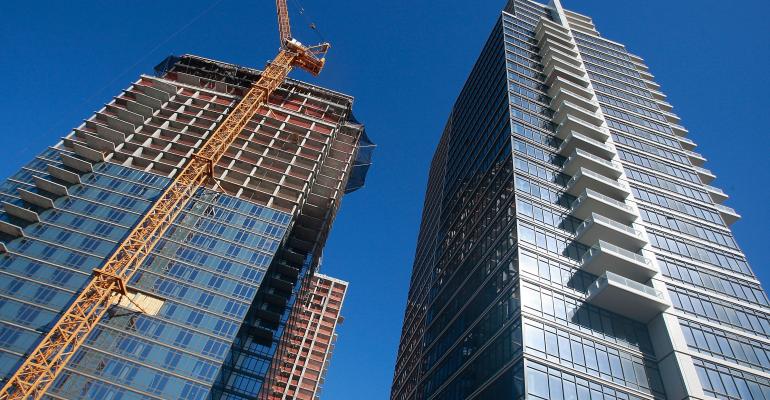Multifamily investors continue to pay high prices for new acquisitions and accept historically low yields. Average multifamily cap rates have been historically low for some time and fell even further in the first half of 2019.
There are a handful of markets, however—New York City, San Francisco, Los Angeles and Chicago—where multifamily cap rates have inched higher. These are some of the same markets where developers have built the most new apartment units in recent years. Housing advocates have also pressed lawmakers to pass new rent control laws in New York City, California and Chicago, worrying some investors.
“Cap rates are definitely moving up in some of the top markets of the country,” says Jim Costello, senior vice president with research firm Real Capital Analytics (RCA).
Lower interest rates may have already begun to push cap rates back down—even in these top markets.
“Cap rates did move up move up in the latter part of 2018 and early part of 2019 in prime urban submarkets in the top six markets… But CoStar data shows a decrease in multifamily cap rates since the first quarter of the year, for all markets, including the top six,” says Andrew Rybczynski, senior consultant with research firm CoStar Portfolio Strategy.
Higher cap rates in New York City
Some of the biggest increases in cap rates hit the New York City apartment market. “Cap rates in in Manhattan are certainly up. In the outer boroughs they are certainly increasing,” says Costello.
In New York City’s outer boroughs, the cap rates investors accepted for apartment properties averaged 4.7 percent in the second quarter of 2019—up 30 basis points from 4.4 percent the year before. Cap rates also rose 10 basis points on Manhattan-based properties to reach 4.1 percent. Nearby Northern New Jersey saw a similar 10-basis-point increase to 5.5 percent. Cap rates stayed roughly the same in Westchester County over the same period, averaging 5.6 percent.
(RCA captured these slight changes in cap rates with its new “Hedonic Series," which accounts for differences in the quality of properties that might otherwise distort sales data.)
"NYC’s new regulations have essentially halted investment in multifamily until owners and operators can determine how to buy and manage a building with these new rules," says Christine Espenshade, managing director with real estate services firm JLL. “Speaking for New York City and D.C. (for older assets only), rent control is a huge issue. Investors are concerned that government can change regulations too easily without consideration for existing assets.”
Cap rates rise in other top markets
In the San Francisco Bay Area, in East Bay cities including Oakland and Berkeley cap rates rose 20 basis points to reach 4.9 percent in the second quarter of 2019, compared to the year before. Cap rates also rose 10 basis points within San Francisco city limits to average 3.8 percent. They stayed level in nearby San Jose over the same period, according to RCA.
In Los Angeles, cap rates averaged 4.4 percent, up 20 basis points from the year before. But cap rates tightened by 10 basis points in Orange County to average 4.2 percent. Cap rates also tightened 20 basis points in the Inland Empire submarket to average 5.1 percent, according to RCA.
In Chicago, cap rates averaged 6.1 percent in the second quarter of 2019, RCA reports. That’s up 10 basis points from 6.0 percent the year before. “In Chicago, uncertainty related to property taxes has investors very cautious,” says Espenshade.
Low interest rates may push cap rates back down
Long-term interest rates have fallen sharply since the beginning of 2019—and that might push cap rates even lower, especially in top apartment markets.
“The top metro areas appear to be a little more reactive,” says Rybczynski. That’s because in these markets, cap rates are often very close to long-term interest rates, like the benchmark yield on 10-year Treasury bonds.
“While Indianapolis cap rates have more spread to absorb rising bond yields without reacting themselves, New York does not have that larger gap, and so rises in closer correlation to other yields,” says Rybczynski. “Now that yields are falling again, we can expect the top six to see their cap rates fall faster than other markets.”





